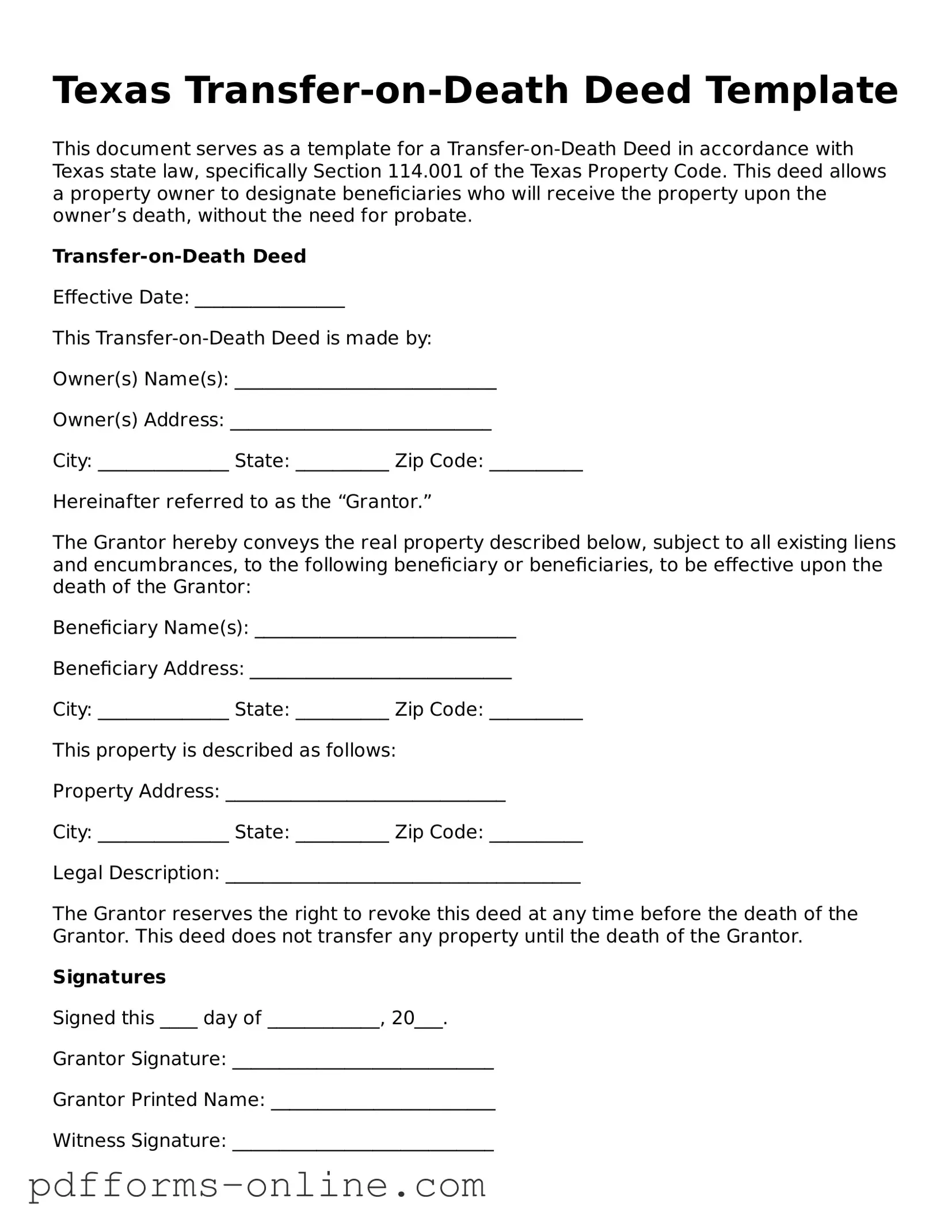Texas Transfer-on-Death Deed Template
This document serves as a template for a Transfer-on-Death Deed in accordance with Texas state law, specifically Section 114.001 of the Texas Property Code. This deed allows a property owner to designate beneficiaries who will receive the property upon the owner’s death, without the need for probate.
Transfer-on-Death Deed
Effective Date: ________________
This Transfer-on-Death Deed is made by:
Owner(s) Name(s): ____________________________
Owner(s) Address: ____________________________
City: ______________ State: __________ Zip Code: __________
Hereinafter referred to as the “Grantor.”
The Grantor hereby conveys the real property described below, subject to all existing liens and encumbrances, to the following beneficiary or beneficiaries, to be effective upon the death of the Grantor:
Beneficiary Name(s): ____________________________
Beneficiary Address: ____________________________
City: ______________ State: __________ Zip Code: __________
This property is described as follows:
Property Address: ______________________________
City: ______________ State: __________ Zip Code: __________
Legal Description: ______________________________________
The Grantor reserves the right to revoke this deed at any time before the death of the Grantor. This deed does not transfer any property until the death of the Grantor.
Signatures
Signed this ____ day of ____________, 20___.
Grantor Signature: ____________________________
Grantor Printed Name: ________________________
Witness Signature: ____________________________
Witness Printed Name: ________________________
Notarization (if required):
State of Texas
County of _________________
Subscribed, sworn to, and acknowledged before me this ____ day of ____________, 20___.
Notary Public Signature: _____________________
Notary Printed Name: ________________________
My Commission Expires: ______________________
This deed shall be recorded in the county where the property is located.
